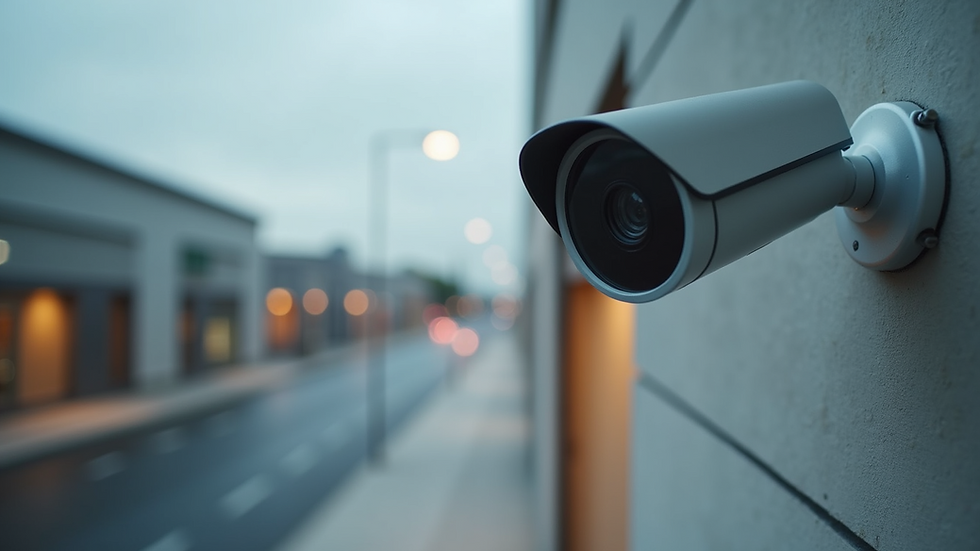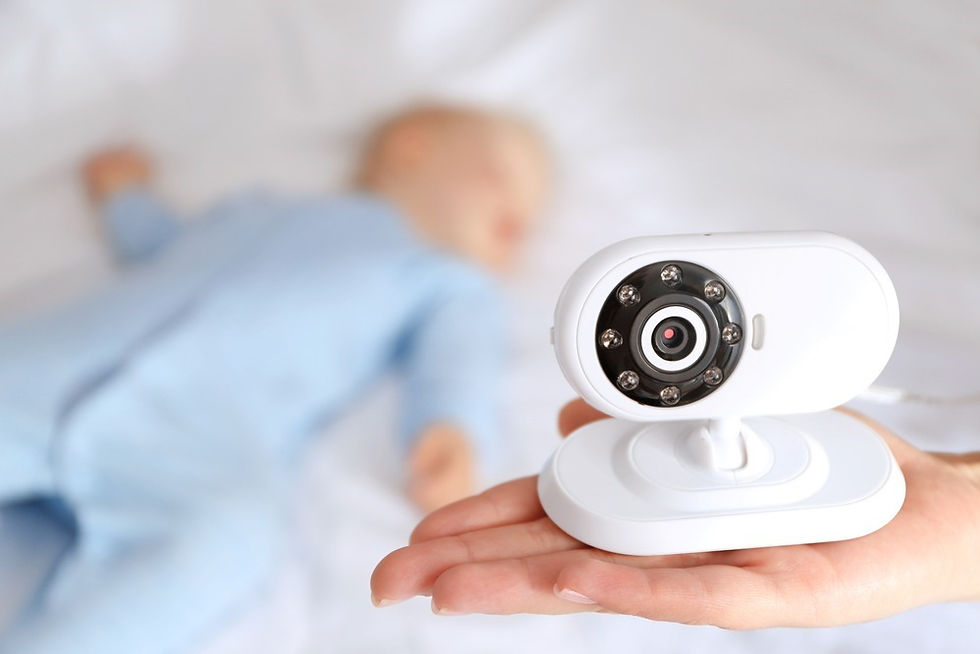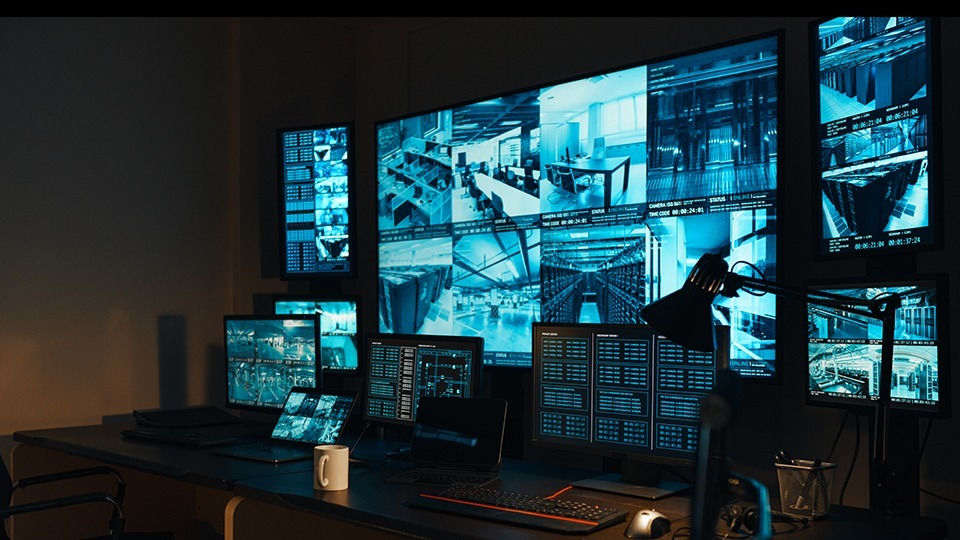How Remote Monitoring Enhances Home and Business Security
- GlobalCCTV station
- 2 days ago
- 4 min read
In today's fast-paced world, security is more important than ever. Whether you are at home or running a business, knowing that your property is safe can provide peace of mind. Remote monitoring has emerged as a powerful tool in enhancing security for both homes and businesses. This technology allows you to keep an eye on your property from anywhere, at any time.
In this blog post, we will explore how remote monitoring works, its benefits, and how it can significantly improve your security measures.
What is Remote Monitoring?
Remote monitoring refers to the use of technology to observe and manage security systems from a distance. This can include video surveillance, alarm systems, and even smart home devices.
With remote monitoring, you can access live feeds from security cameras, receive alerts about unusual activity, and even control security features from your smartphone or computer.
This technology has transformed the way we think about security. Instead of relying solely on physical presence, you can now monitor your property in real-time, no matter where you are.
Benefits of Remote Monitoring
1. Real-Time Alerts
One of the most significant advantages of remote monitoring is the ability to receive real-time alerts.
Imagine you are on vacation, and you receive a notification that your security camera has detected movement in your backyard. With remote monitoring, you can quickly check the live feed and assess the situation.
This immediate access allows you to take action if necessary, whether that means contacting the authorities or simply checking in with a neighbor.
2. Increased Control
Remote monitoring gives you greater control over your security systems.
You can adjust settings, view camera feeds, and even lock or unlock doors from your smartphone. This level of control is especially beneficial for business owners who may need to manage multiple locations.
For example, if you own a retail store, you can monitor the security cameras from your office or home. If you notice something suspicious, you can alert your staff or take further action.
3. Cost-Effective Security
Investing in remote monitoring can be a cost-effective way to enhance security.
Traditional security systems often require extensive installations and ongoing maintenance. In contrast, many remote monitoring solutions are more affordable and easier to set up.
Additionally, the ability to monitor your property remotely can reduce the need for on-site security personnel, further lowering costs.
4. Peace of Mind
Knowing that you can monitor your property at any time provides peace of mind.
Whether you are at work, on vacation, or simply out for the evening, you can rest easy knowing that you have eyes on your home or business.
This sense of security can reduce stress and allow you to focus on other important aspects of your life.
5. Enhanced Evidence Collection
In the unfortunate event of a security breach, having recorded footage can be invaluable.
Remote monitoring systems often include cloud storage options, allowing you to save and access video footage easily.
This evidence can be crucial for law enforcement investigations and insurance claims.
How Remote Monitoring Works
Remote monitoring systems typically consist of several key components:
Cameras: These can be indoor or outdoor cameras that capture video footage. Many modern cameras offer features like night vision and motion detection.
Sensors: These devices can detect movement, sound, or changes in the environment. For example, door and window sensors can alert you if someone tries to enter your property.
Control Panel: This is the central hub that connects all your devices. It allows you to manage your security system and receive alerts.
Mobile App: Most remote monitoring systems come with a mobile app that lets you access your security features from your smartphone.
Setting Up Remote Monitoring
Setting up a remote monitoring system is often straightforward. Here are some steps to consider:
Choose Your System: Research different remote monitoring systems to find one that fits your needs and budget.
Install Cameras and Sensors: Follow the manufacturer's instructions to install your cameras and sensors in strategic locations.
Connect to Wi-Fi: Ensure that your devices are connected to a reliable Wi-Fi network for optimal performance.
Download the App: Install the mobile app on your smartphone to access your security system remotely.
Test Your System: Once everything is set up, test your system to ensure that all components are working correctly.
Real-Life Examples of Remote Monitoring
Home Security
Consider a family that goes on vacation for two weeks. With a remote monitoring system in place, they can check in on their home daily.
They receive alerts if the motion sensors detect movement in their yard. They can view live footage from their cameras and even communicate with anyone who approaches their front door through a smart doorbell.
This level of monitoring gives them confidence that their home is secure while they are away.
Business Security
A small business owner can benefit significantly from remote monitoring.
For instance, a coffee shop owner can monitor the premises after hours. If the alarm goes off, they can check the camera feed to see if it was a false alarm or a real threat.
This capability allows them to respond quickly and potentially prevent theft or damage.
Challenges and Considerations
While remote monitoring offers many benefits, there are also challenges to consider:
Privacy Concerns: Some individuals may feel uncomfortable with constant surveillance. It is essential to balance security needs with privacy rights.
Technical Issues: Like any technology, remote monitoring systems can experience glitches or connectivity issues. Regular maintenance and updates are necessary to ensure optimal performance.
Cost of Equipment: While many systems are affordable, the initial investment in cameras and sensors can still be significant.
The Future of Remote Monitoring
As technology continues to evolve, so will remote monitoring systems.
We can expect advancements in artificial intelligence, machine learning, and smart home integration. These developments will enhance the capabilities of remote monitoring, making it even more effective in preventing security breaches.
For example, future systems may use AI to analyze video footage and identify potential threats automatically. This could reduce false alarms and improve response times.
Final Thoughts
Remote monitoring is revolutionizing the way we think about security.
With real-time alerts, increased control, and cost-effective solutions, it is an essential tool for both homes and businesses.
As technology continues to advance, remote monitoring will only become more effective and accessible.
Investing in a remote monitoring system can provide peace of mind and enhance your security measures, allowing you to focus on what truly matters in your life.









Comments